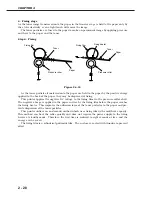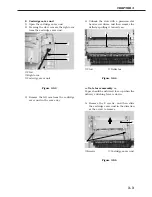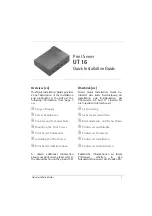
An AC bias is applied to the developing cylinder to help project the toner particles to the drum
surface and improve the contrast of the printed image. The center voltage of the AC bias (1460
Vp-p) varies with the developing DC bias.
This printer changes the developing DC bias according to the IMAGE DENSITY DATA signal
sent from the interface controller. The changes in the developing DC bias change the potential
difference between the cylinder and drum so that the density of the print can be adjusted.
3. Transfer stage
In the transfer stage, the toner image is transferred from the drum surface onto the paper.
Step 4: Transfer
Figure 2-4-10
Positive charges are applied to the back of the paper to attract the negatively charged toner
particles to the paper.
Step 5: Separation
Figure 2-4-11
The elasticity of the paper causes it to separate from the drum. (curvature separation)
To stabilize the paper feed system and to prevent droplets on the printed image at low tem-
perature and low humidity, the charge on the back of the paper is reduced by the static charge
eliminator after transfer.
CHAPTER 2
2 - 27
Paper
Transfer charging roller
Photo-
sensitive
drum
Paper
Transfer charging roller
Photo-
sensitive
drum
Static charge
eliminator
















































